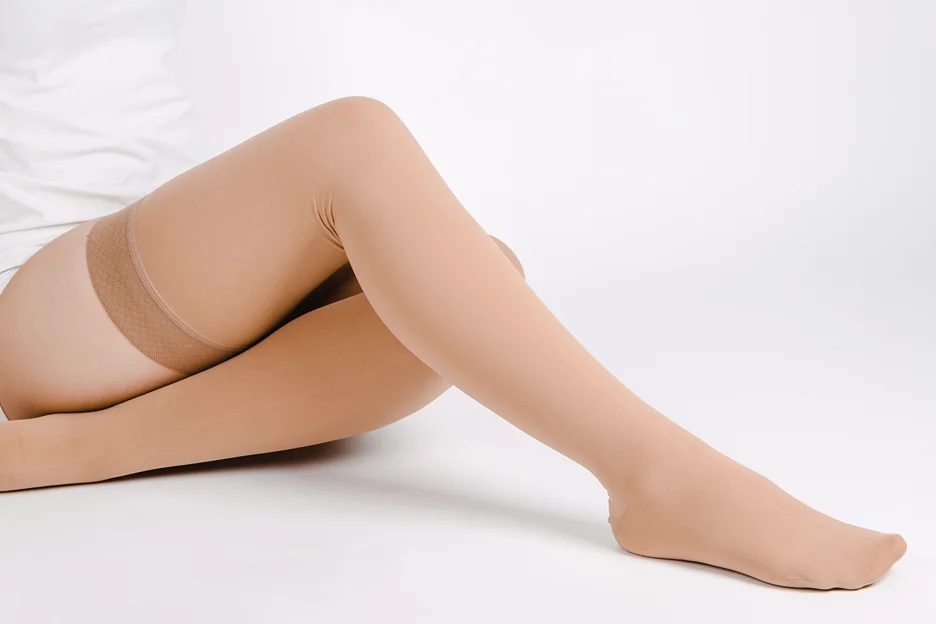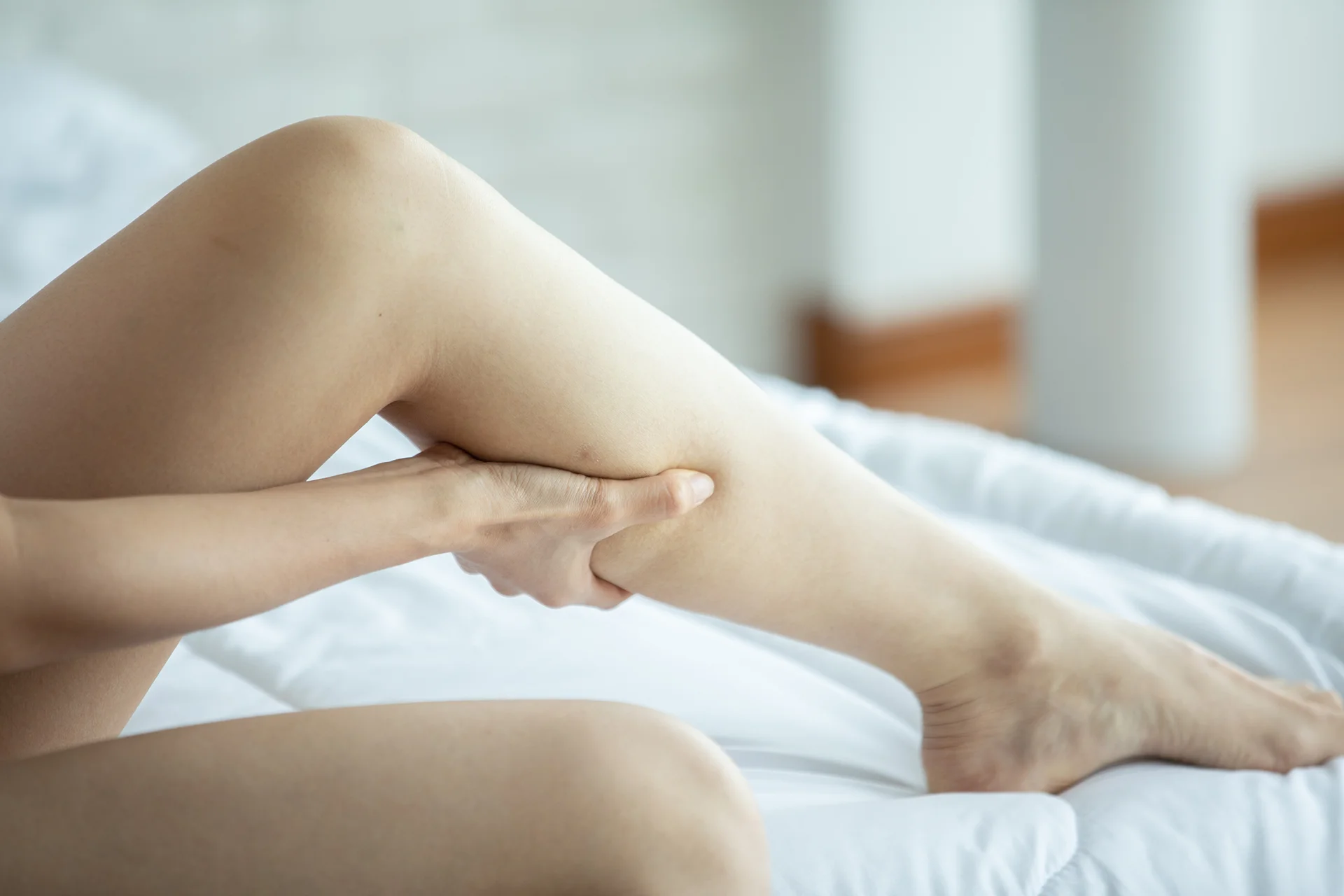If you suffer from sciatic nerve pain shooting down your leg, you know how debilitating it can be. Simple daily activities like walking, sitting, or bending over can become excruciating. While there are many treatment options for sciatica, one safe, drug-free remedy is compression therapy.
In this comprehensive guide, we’ll explain how compression garments like socks, sleeves, and wraps can aid in managing and reducing sciatica symptoms.
But before we dive into how compression helps sciatica, let’s quickly overview what sciatica is.
What is Sciatica?
Sciatica refers to pain that radiates along the path of the sciatic nerve, which runs from your lower back down through your hips and buttocks and into each leg. 90% of sciatica cases are caused by a herniated disk or bone spur putting pressure on the nerve roots, but can also result from piriformis syndrome or pregnancy.
Common symptoms beyond leg pain include:
- Numbness or muscle weakness in the leg or foot
- Tingling or “pins and needles” sensations
- Difficulty moving the leg or foot
- A constant pain that may be worse when sitting
Sciatica can range from irritating to debilitating for patients. While many mild cases resolve over time, ongoing flare ups or severe sciatica may require medical treatment. Compression garments are one non-invasive option to help reduce symptoms.
How Do Compression Garments Aid in Managing Sciatica?

Compression garments like socks, sleeves, shorts, and tights work by applying gentle, graduated pressure to the legs. This compression is thought to:
- Improve circulation and blood flow
- Reduce inflammation and swelling
- Stabilize muscles
- Provide warmth that relaxes muscles and eases stiffness
The key goals are to take pressure off the compressed sciatic nerve and improve alignment of the lower spine. This alleviates the shooting pains and other sensations caused by sciatic nerve irritation. Patients report compression stockings, wraps, and braces provide comforting support to weakened joints and muscles.
Types of Compression Wear for Sciatica
There are a variety of compression garment styles that can aid sciatica based on your needs:
| Type | Description |
| Compression Socks and Stockings | Popular for calf and ankle support, graduated compression socks promote blood flow back to the heart. The snug fit also decreases muscle vibrations that can aggravate sciatica pain. Look for socks with a compression range of 20-30 mmHg. |
| Compression Sleeves | Slip on compression sleeves provide stability and compression when you need quick relief. Try a sleeve just below the knee or high on the thigh to target sciatic nerve pain. |
| Compression Shorts and Leggings | For broad compression from hips to thighs, compression shorts or leggings may help. They also allow movement for exercise. Choose shorts with side openings for using heat/cold therapy. |
| Back Braces | Structured back braces offer lumbar support and compression around the back and abdomen. They restrict spine motion to aid healing. Opt for adjustable, breathable braces. |
| Calf/Shin Wraps | Wraps support muscles and joints during activity. For sciatica pain, calves wraps can provide stability for weakened muscles and relief from foot tingling. |
| Maternity Belts | Support belts worn under the belly provide mild compression to relieve sciatica and back pain during pregnancy. They distribute weight and support core muscles. |
| Knee-high Compression Stockings | Available in sheer, opaque, and open-toe, these stockings apply gradient pressure up the leg. This improves circulation to ease sciatic and leg pain. |
How to Choose Compression Stockings for Sciatica
If opting for compression stockings, keep these tips in mind:
- Graduated stockings are recommended, as they are tighter at the ankle and gradually decrease pressure up the leg. This style improves blood return from the lower legs.
- Focus on fit and comfort. Stockings should fit snugly without restricting circulation. Ensure they don’t pinch or constrict.
- Select stockings offering 20-30 mmHg of compression. This amount provides support without being too tight.
- Breathable materials like nylon/spandex blends work well. Cotton can lose compression over time.
- Measure your calves and ankles and follow size charts. Proper sizing prevents rolling, slipping, or constriction.
- Ease into wear. Begin with 1-2 hours per day and build up tolerance. Remove if tingling/discomfort occurs.
Specific Compression Garments Designed for Sciatica Relief
Today there are compression garments made specifically to target sciatica pain points. Here are a few top options:
- Sciatica Compression Pants by ComfyMed – These medical-grade pants feature a crisscross pattern that applies pressure to the piriformis muscle. This takes pressure off compressed sciatic nerves.
- MB Sports Sciatica Thigh Sleeve – The adjustable thigh wrap on this sleeve surrounds the leg to help stabilize and support the sciatic nerve.
- AidBrace Sciatica Back Brace – With lumbar pads and adjustable straps, this brace compresses the lower back while correcting posture to take pressure off nerves.
- FLEX-CONNECT Knee Compression Sleeve – The honeycomb pattern and flexible bands in this sleeve grip the leg to relieve tension on the lumbar spine and sciatic nerve.
- SPIbelt Compression Wrap – The lightweight velcro belt wraps around the hips to provide stability and lift pressure off the sciatic nerve when moving.
Side Effects and Precautions When Using Compression Garments for Sciatica
Compression therapy is safe and low-risk when garments fit properly and are used as directed. However, take note of these precautions:
- Avoid overly tight garments that restrict circulation to extremities. This can worsen nerve pain.
- Remove compression wear if skin becomes irritated, marked, or discolored.
- Seek medical advice if you have diabetes, arthritis, vascular conditions, or decreased sensation.
How Long Should I Wear Compression Garments for Sciatica?
It’s best to follow the manufacturer’s guidelines on duration as compression needs vary. Some general wear time recommendations:
- For mild sciatica pain, compression socks or sleeves may only be needed during flare ups or physical activity when more support is required.
- For sitting or standing in the same position all day, continuous 8-10 hours of low compression could help with discomfort.
- Alternate compression garments throughout the day if needed – such as a sleeve while active and a wrap or brace when sedentary.
- At night, try sleeping in compression socks or soft leggings to wake with less stiff or tender legs.
- After an acute sciatica injury or episode, compression for several weeks can aid the healing process.
Build tolerance slowly. Listen to your body and remove compression if it causes new pain or discomfort.
The Bottom Line

From socks and sleeves to braces, compression therapy offers a customizable way to manage sciatica. By improving circulation and providing joint stability, compression garments can relieve the shooting pains and numbness of a sciatica flare up. Both mild, occasional sciatica and chronic cases benefit from compression’s safe, non-invasive support.
If you’re ready to alleviate your sciatica symptoms, sign up on Kaly and get matched with a healthcare specialist who can advise you on the best compression garments and exercises to relieve your nerve pain. Our integrated telehealth platform makes it easy to get sciatica relief safely from home.
Frequently Asked Questions
Are Sciatica Compression Socks Effective?
Yes. Studies show graduated compression stockings can significantly improve pain, numbness, and mobility issues from sciatica. Participants wearing 20-30 mmHg stockings for three weeks experienced less intense leg pain.
Compression socks are thought to ease symptoms by:
- Improving blood circulation in the legs, reducing pressure on nerve roots
- Supporting weakened ankle and leg muscles with a firm grip
- Decreasing inflammation and muscle vibrations
- Providing warmth and soothing compression to compressed nerves
While not a cure, consistent use of fitted compression stockings may provide sciatica relief and aid recovery between flare ups. Mild compression allows movement with support.
What Does a Compression Sleeve Do for Sciatica?
Slipping on a sciatica compression sleeve makes it easy to get quick relief during activities that irritate your sciatica. Similar to socks, the uniform compression of a sleeve:
- Pushes pooling blood and fluids back into circulation
- Reduces inflammation around the sciatic nerve
- Stabilizes joints, preventing excess movement
- May stimulate tissue healing through improved circulation
This all serves to take pressure off the compressed nerves causing your leg and glute pain.
Compression sleeves also increase proprioception – your awareness of that body part. This allows you to adjust movements to avoid pain.
Sleeves that include features like Kinesio taping can further help decompress the sciatic nerve by gently lifting skin away.
How Can I Use Compression Wrap for Sciatica?
Compression wraps provide adjustable compression to target sciatic discomfort at the source – your lower back. Follow these tips for relief:
- Location – Wrap the belt around your hips/lower back to decompress the spinal and nerve roots.
- Tightness – Use moderate tension that feels supportive but allows a full range of motion.
- Duration – Aim for 1-2 hours of wear at a time to reduce inflammation, followed by a short break.
- Movement – Light stretching, walking, and yoga are safe exercises with a compression wrap. Avoid heavy lifting/bending forward.
- Pairing – Apply an ice or heat pack over the wrap to address inflammation or muscle tension.
- Listen – Loosen or remove the wrap if it causes pain or discomfort.
- Maintenance – Hand wash and air dry wraps to maintain elasticity and compression.
A wrap allows you to mobilize with targeted support at the lumbar spine. Follow any accompanying stretching protocols for optimal results.
Can Compression Socks Help Sciatic Nerve Pain During Pregnancy?
Pregnant women often experience sciatic pain as the baby grows, weight increases, and hormones soften joints. This commonly occurs around weeks 17-37 of pregnancy.
Compression socks are a safe, medication-free option to help relieve this temporary sciatica discomfort.
Benefits of maternity compression socks include:
- Improved circulation reduces swelling that can pinch nerves
- Support and stabilization of shifting joints
- Decreased sciatic nerve irritation and inflammation
- Pain relief from heel to hamstring thanks to gradient compression
- Preventing varicose veins, leg cramps, and swelling
Pregnant women should opt for soft, comfortable over-the-belly socks that don’t squeeze too tightly. This allows healthy blood and lymph flow. There are also maternity support belts that provide gentle abdominal compression to take pressure off the spine and nerves. Both can safely ease pregnancy sciatica flares.
